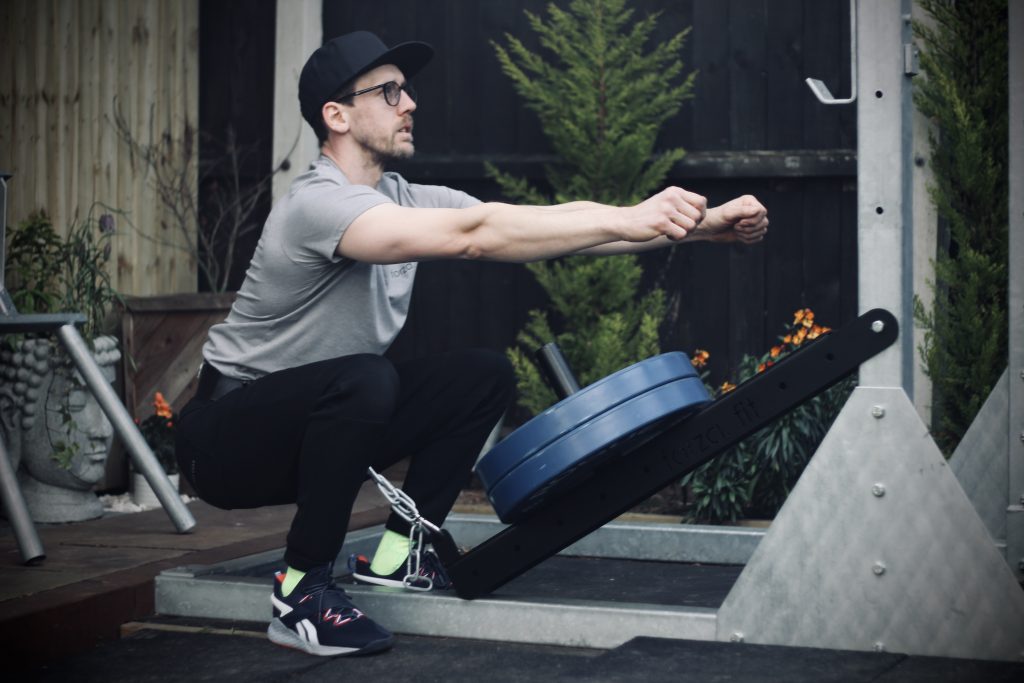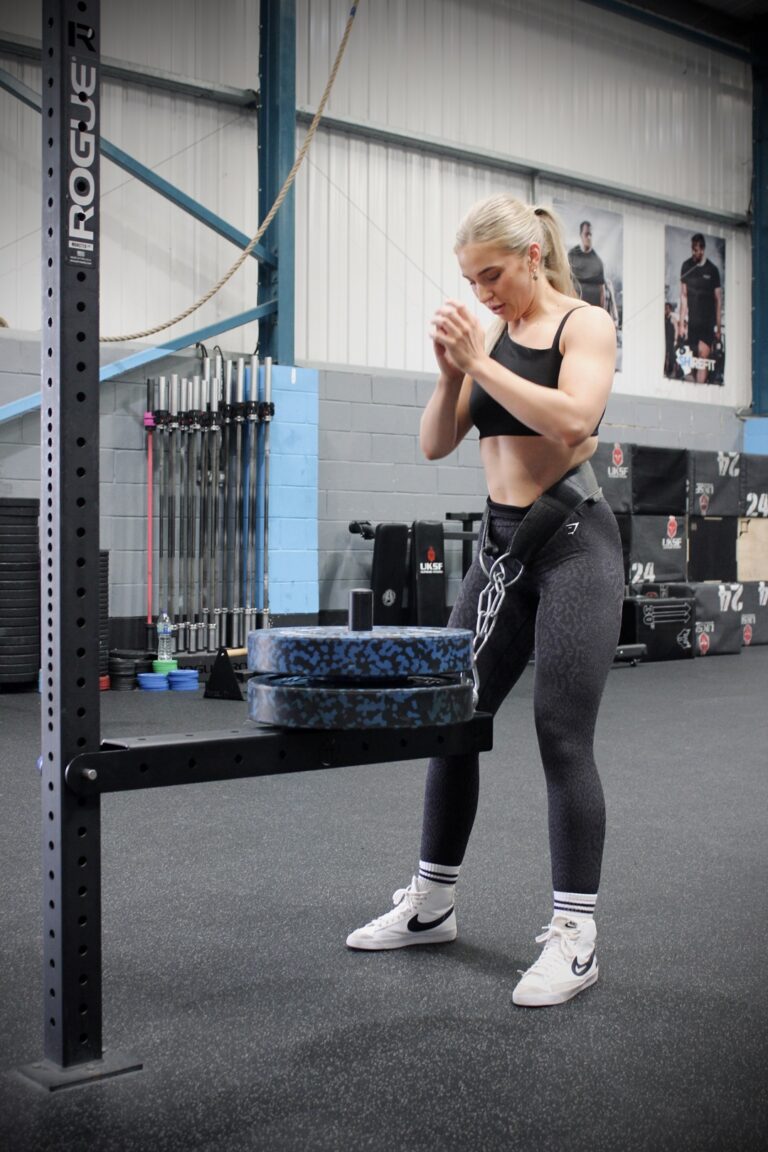Why Use A Belt Squat Attachment?

Share This Post
They allow athletes and fitness enthusiasts to target their lower body without the spinal load that comes with traditional squats. This can be especially beneficial for those recovering from upper body injuries or those who want to minimise the risk of back pain.
However, the belt squat is a machine rarely seen outside of a specialist or powerlifting gym, due to the space required, or the cost involved.
Can the belt squat attachment be the answer? Unlike the belt squat machine, which is large and often expensive, the belt squat attachment offers a compact and more affordable alternative. With access to a belt squat attachment, you’re lifting directly against the weight with your legs, simulating the squat movement without the load on your back. This method ensures that your legs are still being pushed to their limits, promoting muscle growth and strength gains.
Using a weightlifting belt clipped to the attachment, you can secure the weight around your hips, ensuring a stable and comfortable lift. This setup not only mimics the natural squatting motion but also allows for a deeper range of motion and greater activation of the leg muscles. It’s an efficient way to enhance your squatting capability and overall leg strength without the need for a bulky machine.
The belt squat attachment represents a versatile and accessible solution for those looking to incorporate belt squats into their training regime. It allows for effective lower body training with reduced risk to the spine, making it an ideal choice for a wide range of athletes, from beginners to advanced lifters, looking to maximise their leg training efficiency.
BENEFITS OF THE BELT SQUAT ATTACHMENT

The most obvious benefit of the belt squat attachment is the way the weight is loaded on the body. By placing the belt around the hips, the exercise avoids the most common problems people have with traditional barbell back squats, where the weight is loaded on the shoulders. This unique loading method is the secret to strength gains without the added risk to the spine.
Without the weight pressing down on the spine, the athlete can continue to work their legs without worrying about the injury potential of excessive spinal compression. This reduction in spinal load allows for a focus on compound movements that target the lower back, glutes, and the entire lower body in a safer manner. Squat variations can be performed with a belt squat attachment, ensuring that the torso remains upright, reducing the stress on the lower back and spine, and engaging the targeted muscle groups more effectively.
Additionally, the ability to safely lift heavy weight without loading the spine is a significant advantage. Lifting heavy with belt squats encourages strength gains and muscle growth in the glutes and legs by allowing for higher volume and intensity without compromising the health of the back. The emphasis on heavy lifting without spinal compression makes the belt squat attachment an invaluable tool for those looking to enhance their lower body strength safely.
So far…
The most common way to perform the belt squat at present is to attach some plates to a leather dip belt, set up two flat benches or weight lifting blocks, awkward lying, climb up and start squatting.
This works well enough, but one slip and you’re looking at a strain or worse.
Stronger lifters tend to have issues with this set up when it becomes awkward to attach enough weight to the belt without making your stance excessively wide.
One solution is to buy a specialised belt squat loading pin, which attaches to the belt and allows you to load the plates vertically rather than horizontally.
It does give options to add a bit more weight but still forces an unnaturally wide stance, limiting its use in the long run.
SOLUTION: THE SQUAT BELT ATTACHMENT
A great, and economical solution could be a wall or rig attachment.
This will typically be a piece of steel with a loading pin at the top or sides for plates, and an eye to clip a dip belt carabiner to. Such a setup allows you to squat using a squat movement that closely mimics traditional squats but without the weight on your back. By performing the movement with a dip belt, the focus shifts entirely to the lower body, allowing for a deep, effective squat without the spinal load.
Some cheaper options have their shortcomings, though. They can either be too short of a lever with not enough space to get a comfortable stance, or they have another significant problem – being that these can’t always be started from a standing position. When it gets heavy, it becomes quite awkward. Plates loaded on the side can also limit the space available for different stances, which could restrict the ability to perform the movement fully and comfortably.
With our belt squat attachment, all that is required is a lifting belt to clip yourself in. This design consideration ensures that you can always start from a standing position, regardless of the weight. This setup not only makes it easier to begin your workout but also significantly reduces the awkwardness associated with lifting heavy. The attachment provides ample space for a comfortable stance, allowing for a full range of motion and the ability to adjust your footing as needed to target different muscle groups effectively.
HOW TO USE THE BELT SQUAT ATTACHMENT
Attach it to the rig upright, bracket or squat stand (make sure the squat is bolted down or secured). Sit it at the correct height on the rest handle and load on the plates (no clips required).
Clip yourself in and lift slightly to release the handle and then squat down (think sit back and down) once your reps are complete the rest can be placed back underneath so you can unclip your belt safely and comfortably.
A great piece of equipment – this could be a game changer in an industry that seems to be shifting towards great movement and great education, and we’re all for it.

1 comment on “Why Use A Belt Squat Attachment?”
Thanks for your blog, nice to read. Do not stop.
More To Explore
The Ultimate Guide to Skipping: Unlocking Strength, Balance, and Stress Relief with a flow rope
Flow rope training is a dynamic workout method that involves using a thick braided rope to create rhythmic, fluid movements. Unlike traditional jump rope exercises, a flow rope workout doesn’t necessarily require jumping. Instead, you move with the rope rather than against it, making it an excellent workout for balance, coordination, and relaxation. Popular among
The Benefits of Training with a Weighted Vest: Boost Your Strength and Endurance
Integrating a weighted vest into workout routines is an increasingly popular fitness strategy aimed at enhancing the effectiveness of various exercises. This comprehensive guide examines how weighted vests can significantly boost physical fitness by increasing the intensity of workouts, details the potential risks, and offers insights into maximising benefits while minimising potential drawbacks. What is